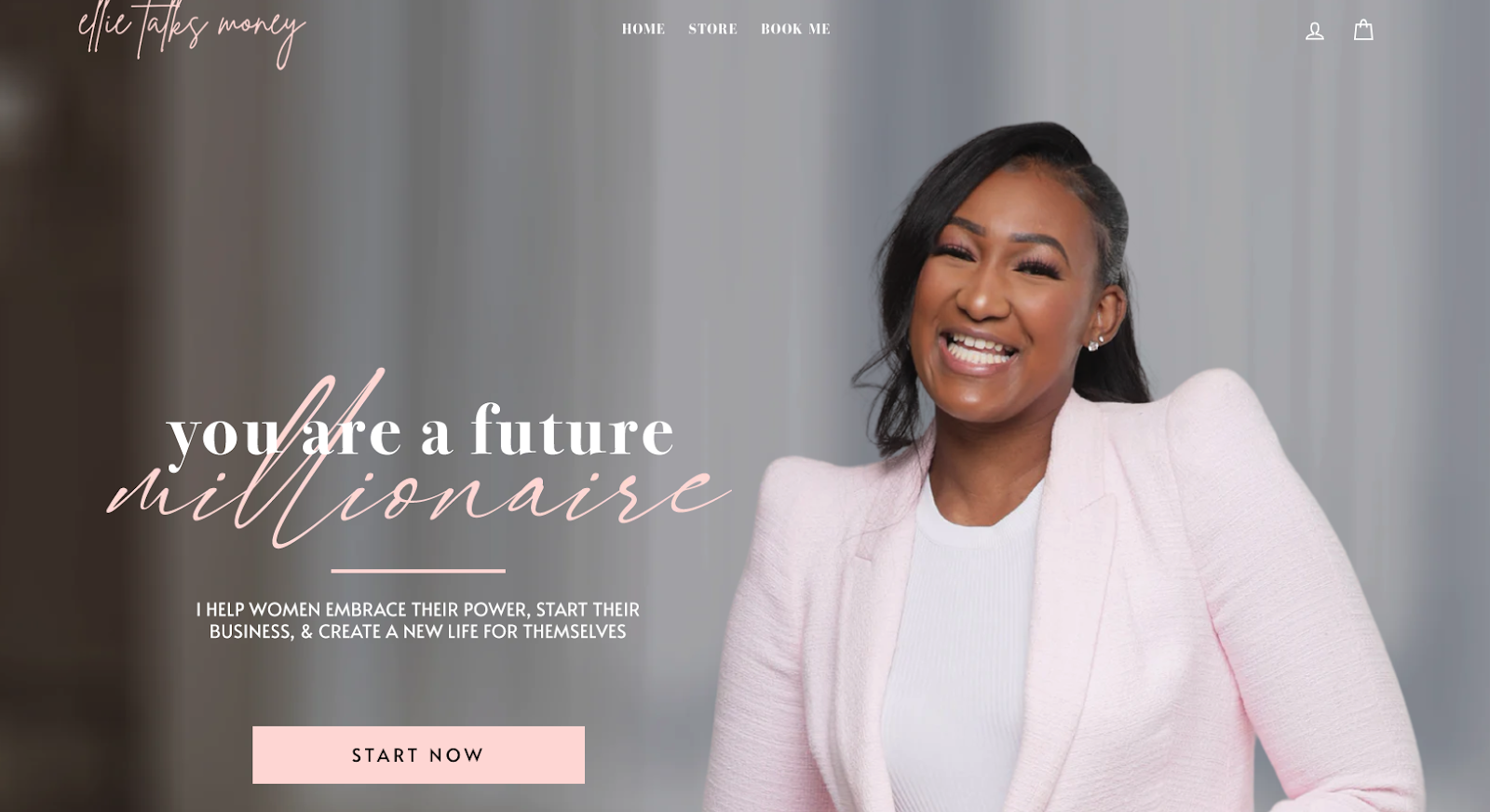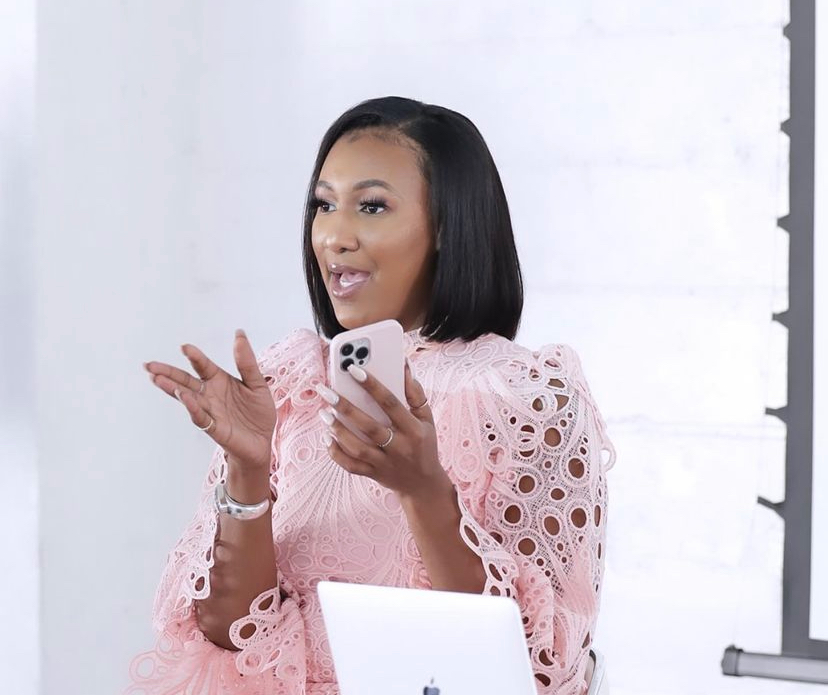Do you want to start an online business but don’t know how to build an audience that will buy from you? Or maybe you already have an online course or business, but you’re just not making sales?
You’re not alone. The number one piece of feedback we hear from creator-educators is that they don’t know how to market and sell.
It’s usually something along the lines of: “I know how to teach and help my students, not how to market or make sales! How do I reach more people?”
So we spoke with 7 figure creator-educator and entrepreneur Ellie Diop of Ellie Talks Money.

Who better to give concrete advice on how to grow your online course business and sell?
After being laid off from her job and recently divorced, Ellie had to start her life over. She decided to bet on herself and start sharing her knowledge of finance online.
She soon realized the $40/hour coaching sessions she was offering weren’t sustainable to provide for both herself and her 4 children. So, she made the switch to providing courses and other content – and made her first million 4 months later.
Here are her proven tips to sell your content and business.
Ellie Diop’s ✨proven✨ tips for selling
Skip ahead:
Conduct market research on your area of strength
Do not let one day go by without marketing
Create more than one product to sell
Remind people of their pain points
Consistency is the only cheat code
Conduct market research on your area of strength

Let’s say you are an expert at knitting. You love knitting and have been practicing for years. Your specialty is knitting dog sweaters and you want to teach others how to knit them as well. You could just go ahead and launch your online course, you know what your niche is right?
But you’re missing a crucial step: market research. Maybe the dog sweater market alone is too small, and you find out a better market size for you would be teaching how to knit all kinds of pet sweaters, not just dogs.
Make sure you are creating a product that the market desires.
Serve people that are underserved
Ellie’s industry is finance. In finance women, and especially women of color, are underrepresented and underserved. Finance content is not traditionally geared towards them. Ellie saw the opportunity in this space and created her brand Ellie Talks <oney to fill the gap.

In the knitting example: maybe you find that knitting courses are usually targeted to older demographics, and there aren’t many courses aimed at younger people. So, you decide to alter your branding and language to target younger millennials with pets.
Become your own hero
Ellie speaks at length on the importance of recognizing imposter syndrome. She firmly believes that you need to strongly believe in yourself and your abilities to have success.
Read more: How to Overcome Imposter Syndrome
She recommends a specific exercise to help combat feelings of inadequacy. Take a piece of paper or a word or google doc and start writing your accomplishments down. They can be big, small, work-related, from your personal life, whatever – it doesn’t matter.
When imposter syndrome is next whispering in your ear, or you’re facing an uncertainty block, all you’re going to do is go back to that list. The list is proof of all you’ve accomplished and done, maybe even when you were scared or uncertain. As you keep accomplishing keep adding to the list and repeat next time you feel uncertain.
As Ellie says, “you are the only one that’s going to keep pushing you.”
Do not let one day go by without marketing
Ellie stressed the importance of consistent marketing over and over during her talk with us. In the beginning of her business she posted to Instagram a minimum of 3 times a day (using Later to schedule posts, and Canva to create them). She even shared a story of posts going up on her wedding day (scheduled ahead of time of course ;).)
Pay attention to what posts get the most engagement and use that data to inform what you create courses and content about. For example, when Ellie noticed that one of her Instagram posts all about business credit received many comments and questions, she created her first course on that topic. This was a great stepping stone for her audience into online courses as she knew there was interest!
Read more: 58 Ways to Market Your Online Course
Other marketing tips: Ellie suggests that aspiring creator-educators look at what is working for other companies, and copy their methods. You don’t have to reinvent the wheel. She also suggests connecting with other entrepreneurs and creator-educators to continually expand your network. You can learn how they are converting their audience into customers, and potentially cross-promote with one another.
Feedback is your best friend
When Ellie first launched, she gave out her course for free to people who engaged the most with her social media posts for about 3-4 months. All she asked in return was that they gave feedback on her “beta” course when they finished.
That feedback not only helped her improve the course but helped guide all of her future courses and content. She highly recommends launching a beta version of your course or product (it doesn’t have to be even close to perfect!) and collecting feedback before launching a paid version.
Try different pricing
Ellie priced her first course at $15. She didn’t put a lot of thought into choosing that number, other than that she wanted it to be affordable for a regular person. Especially since her first launch was during the pandemic, she didn’t want the price to be out of the range of most people’s income.
Read more: How to Price Your Online Course
Eventually, after she gained popularity she upped her prices to around $100. She now charges anywhere from $297-$497 for most of her programs. She suggests that creators look at what others in their space are charging and go from there. For example, if someone with more experience than you charges $150, maybe you will start out charging $100, and raise your prices as you gain more knowledge and clients.
Ellie’s top tip: prices that end in the number 7 tend to convert higher than prices that end with any other number.
Create more than one product to sell
Diversifying your income is a great way to make more money faster. Ellie explains that she did this right from the beginning. Along with offering online courses, she offered PDFs and downloadable eBooks right away.
Read more: 4 Ways to Diversify Your Income as a Freelancer
Now, you don’t need to do it all at once! Pay attention to what sub-topics within your niche resonate with people through social engagement and through course completion rates. You can even build a community and request direct feedback on what people are most interested in.
Read more: 7 Steps to Building an Online Community
Once you find those topics, create different downloadable content either to sell or to give away for free in exchange for interested people’s email addresses.
Remind people of their pain points
Stay with us: we’re not talking about reminding people of their frustrations for no reason. Ellie swears the best way to get people’s attention and sell is to point out people’s pain points, and then tell them you have the solution in the same post.
Her formula is: if _____, then ______. For example, if you’re frustrated that you can’t do your taxes, then you need my easy 5-step course on how to do taxes in 1 hour. This shouldn’t be the only way you write about your products, but it’s a great starting point to make sure you understand what your audience’s pain points are, and how you help improve their lives.
Consistency is the only cheat code
Ellie’s biggest takeaway that she emphasizes is that only consistency can build your business. Even if you take all the right steps, you won’t be able to grow your audience and then convert them to buyers if you aren’t consistent.
That means consistent marketing, consistent communication (for example: responding to emails and direct messages), and consistent valuable offerings.
Hopefully implementing these tips will help you make those sales! They sure did for Ellie.





